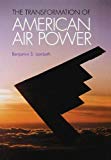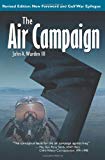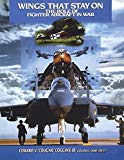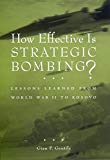History of the F-16
The first F-16 was developed in 1974. They wanted a lightweight fighter that wouldn t cost as much as the fighters they had at the time. They also needed a way to have a bomber without going out and building another bomber which would cost millions more. So they decided to turn the F-16 into a fighter/bomber and it all worked out. Here’s how.
The Lockheed F-16 Fighting Falcon
They F-16 Fighting Falcon was developed and produced by General Dynamics Corp, until they went bankrupt. Then eventually Lockheed took over the production of the F-16.
The manufacture of the first F-16 began at General Dynamic’s Fort Worth plant in August of 1975. This involved General Dynamics in a major modernization of its huge Fort Worth plant, which had originally been built during World War II.
The F-16 Fighting Falcon, when it first came out, was designed to be in the Air Forces lightweight fighter (LWF) program. The first F-16 was developed as a YF-16 prototype back in 1972. It made it’s first official flight on February 2, 1974. A level speed of Mach 2 at 40,000 ft was attained on March 11, 1974.
The production F-16A differed from the YF-16 in having a 13-inch fuselage extension to hold more fuel and the Westinghouse APG-66 radar. The wing area was increased by 20 square feet and an additional underwing hardpoint was fitted.
The first YF-16 was brought out on December 13, 1973 to make its first test flight at Fort Worth and was air freighted by C-5A to Edwards AFB on January 8, 1974. It was an unintended short hop around the pattern on January 21, 1974 at the hands of the test pilot Phil Oestricher. During high-speed ground tests at Edwards, Oestricher had inadvertently scraped the tailplane on the runway as the nose was raised, and a violent lateral oscillation set in. he decided to take off and regain control in the air. he stayed up for six minutes and landed uneventfully. The scheduled first flight was delayed until a new right stabilizer could be fitted. The first official flight took place February 2, 1974, again with Phil Oestricher. he reached 400 mph and 30,000 ft.
The second YF-16 was developed and was then flown for the first time on March 9, 1974 with test pilot Neil Anderson at the controls. During his flight Anderson belly landed his prototype on the grass in front of the General Dynamics while doing a practice show before Paris. On takeoff, he did what was then an unique maneuver… almost as the wheels left the ground, the gear was cycled, the aircraft put into a 270 degree roll, then immediately placed into a 9g turn. Unfortunately, one of the tires was slightly out of balance, and this combined with the abnormal torque on the gear from being in a roll caused one of the main gear tires to jam on a ledge when it entered the wheel well. Anderson had no choice but to put the wheels up, and put it down in the dirt, right in front of thousands of General Dynamic employees and their families. He was unhurt, but the damage to the hand-built prototype was too expensive to repair. On two occasions during these early test flights, the F-100 engine went uncommanded idle while in flight, forcing a dead-stick landing. Temporary flying restrictions were imposed on the YF-16 until the problem could be corrected. The fault was traced to contamination of the fuel-control valve which caused the valve to jam in the idle position, but while the curbs were in effect the YF-16 had to remain within dead-stick landing distance of the airfield.
The first developed F-16A made its first flight on August 7, 1978, and the new F-16s were delivered to the Air Force ten days later.
At first the designers developed different kinds of F-16 classifying them into A,B,C, and D. Eventually there would come more F-16s and they would be classified differently, like the F-16/79 and the F-16XL. But for the time, the F-16 had been put into two basic categories F-16A and F-16C were single seaters and the F-16B and the F-16D were two seaters used for training pilots.
When they decided to make a two seater F-16 they decided to make it slightly different compared to most. The F-16B has tandem cockpits that are about the same size as the one in the A model. Its bubble canopy extends to cover the second cockpit. To make room for the second cockpit, the forward fuselage fuel tank and avionics growth space were reduced. During training, the forward cockpit is used by a student pilot with an instructor pilot in the rear cockpit.
On January 1975 the Secretary of the U.S. Air Force announced that the F-16 had been selected for full-scale engineering development. The in 1980 the name Fighting Falcon was adopted by the users of F-16s.
The first F-16 to enter service was delivered the USAF’s 388th Tactical Fighter Wing at Hill AFB, Utah, on January 1979.
The first combat that an F-16 was ever in was in the Isreali Air Force, which used eight aircraft to destroy Iraq’s Osirak nuclear reactor on June 7, 1981.
When they develop aircraft usually they go in numbers, like 14 to 15 to 16 and so on. They then started to develop a Northrop YF-17. At the beginning they were trying to get as many people to fly the YF-17 instead of the YF-16, but it didn t work. The YF-16 had caught on by people all around for being one of the best fighters of the time.
On January 13, 1975, Air Force Secretary John McLucas announced that the YF-16 had been selected as the winner of the Air Combat Fighter (ACF) contest. The Air Force placed a contract for fifteen Full-Scale Development (FSD) airframes. Both single and two-seat versions would be built, with the single-seater being designated F-16A and the two seater F-16B. The reason given by the Secretary for the decision was the lower operating cost, longer range, and better transient maneuverability of the YF-16.
One proposal from General Dynamics was for a single-seater naval fighter based on the two-seat F-16B, but with the space ordinarily occupied by the rearseat being used for increased avionics or fuel. On May 2, 1975, the Navy announced that they had decided not to buy the navalized F-16, but instead they decided for an aircraft like the YF-17, which was eventually to emerge as the McDonnell Douglas F/A-18 Hornet.



